Have you ever stopped to think about why there are so many different names for macaroni? Read on for an explanation about different pasta noodles, their names and derivations and why you might choose a fettuccine noodle over a farfalle.
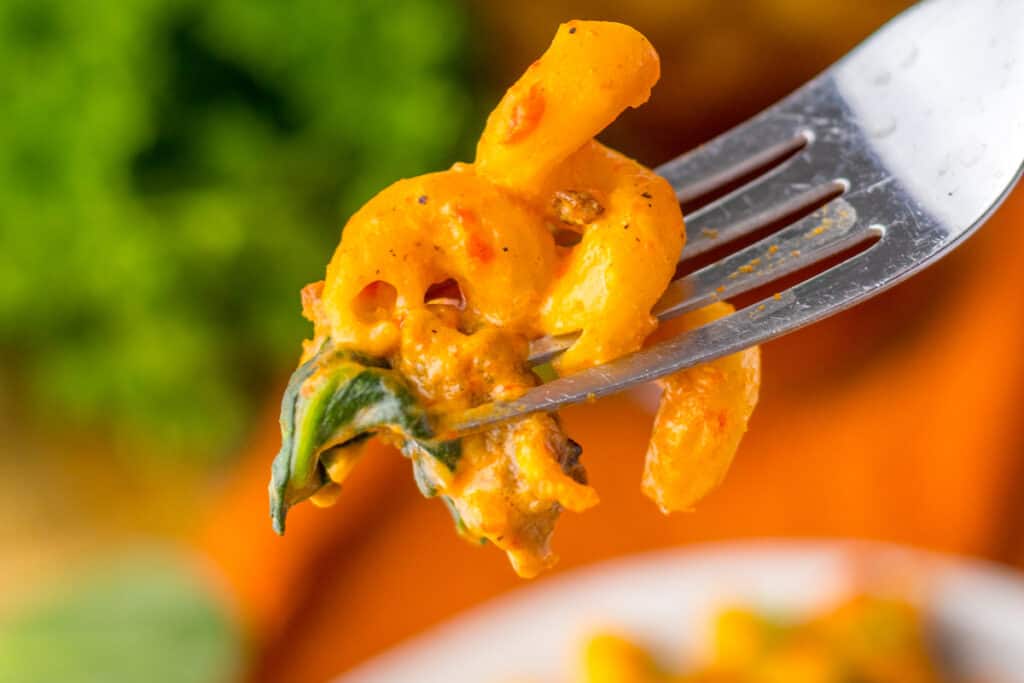
Names of pasta noodles based on shape
When it comes to Italian ingredients — and pasta specifically — you’ll often find items named after their ingredients, the town in Italy where they originated or what the item resembles. For example, pasta itself is an Italian word that means dough. If you’ve ever made pasta from scratch, you know it involves making dough.
Pastina, in the family of small pasta types, means little pasta. When you add I-N-A or I-N-O – feminine and masculine suffixes, respectively — to any word in Italian, it means little. In some instances, you might see other suffixes for cute or small. These include:
- I-N-I
- E-T-T-E
- E-T-T-I
There are other times when Italian dishes have a name based on what they resemble. For example, when creating our Copycat Trader Joe’s Arancini recipe, I wondered what arancini meant in Italian. The literal translation is little oranges. Considering arancini is a recipe for fried rice balls made with risotto that are about the size of my favorite winter fruit, tangerines, well, that makes sense.
Pasta names and shapes
Depending on your source of information, some food experts will tell you there are only 12 types of pasta noodles, and anything else is a variation on the original. Others say there are up to 300 different macaroni styles. Here are the names of 11 common pasta noodles that have a direct translation to an Italian word that describes their shape or properties.
Conchiglie
Conchiglie is shell pasta. There are big and small shell types of this noodle. If you look at the Italian word for shell — conchiglia — you see the word conch right in it.
Farfalle
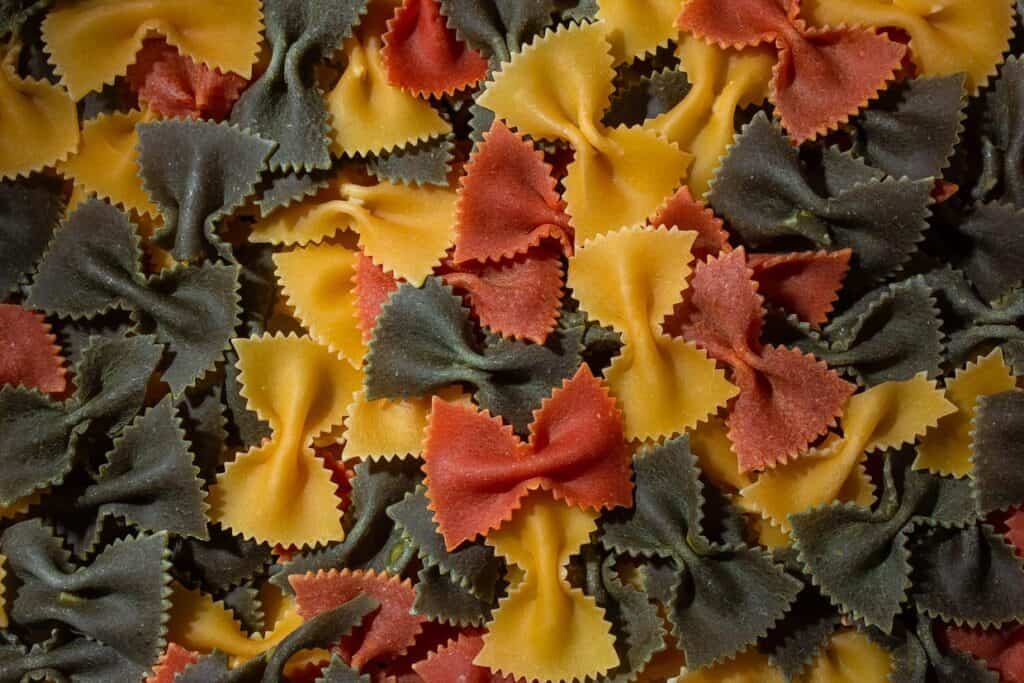
Farfalle is a bowtie-shaped pasta that is pinched in the middle and has a ragged edge. If you ever thought that farfalle resembled a butterfly, you’re right. Farfalla means butterfly in Italian.
Gnocchi
The Italian word for knuckle is nocca. Some people believe that gnocchi got its name because these pasta dumplings made from potatoes resemble knuckles.
Linguine
The Italian word for tongue is lingua. So, while linguine doesn’t follow the suffix formula described earlier, its translation is little tongues. The name makes sense, considering it is a long, thick, flat noodle that could look like a tongue.
Manicotti
In the United States, many people use cannelloni and manicotti interchangeably. Both are bigger, tube-shaped pasta that you stuff with a filling. The Italian word for sleeves is maniche, so it makes sense that pasta that resembles sleeves would be called manicotti. As far as cannelloni goes, the Italian word for pipe is canna. You get the picture.
Orecchiette
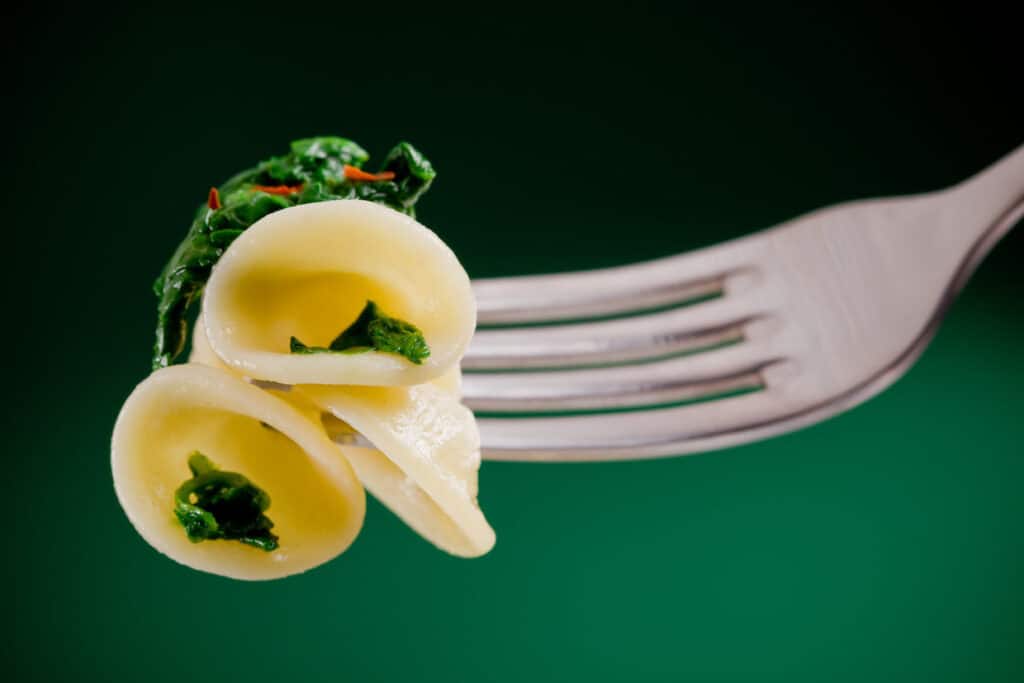
Orecchiette means little ears since the Italian word for ears is orecchio. This curved-shaped pasta is, in fact, shaped like tiny ears.
Rigatoni
The Italian word for striped is rigato. So, the name for rigatoni is more about the lines or stripes on the outside of this tubular pasta than the shape overall.
Rotelle
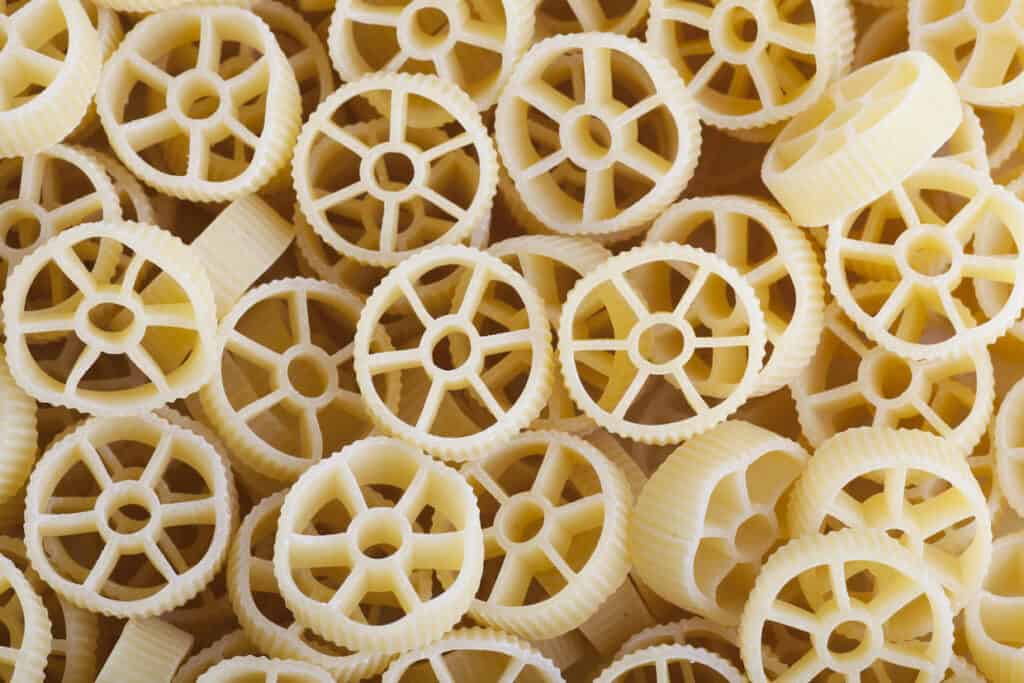
Here is one pasta where the name for the food is the same as the Italian word that describes it. Rotelle is a wheel-shaped pasta. Rotelle means wheels in Italian. As far as the noodle itself, it resembles the round piece you would use to play the classic board game Trivial Pursuit.
Rotini
Rotini in Italian means little twists. It is similar to fusilli, which translates to little corkscrews in Italian. Basically, both rotini and fusilli are your spiral variety of pasta.
Spaghetti
Spaghetti is perhaps the best-known of all Italian pasta noodles. When it comes to how it got its name, the Italian word for string or twine is spago. Add in a suffix for cute or little, and you get spaghetti.
Tortellini
The Italian word for cake or pie is torta. Somebody along the way must have thought that tortellini macaroni looked like little cakes. Thus, the name of this round pasta that’s often filled with cheese.
Best pasta types for different sauces
When cooking pasta noodles, it’s important to choose a shape that will work best in the dish you’re serving. You want a macaroni style that will hold the sauce you put on it or complement the ingredients in the dish. Here are explanations of noodle shapes and what kinds of sauces or recipes they’re best used for.
Curved pasta, like orecchiette and conchiglie, are great vessels for toppings. “The shape does such a great job in holding onto the sauce,” explained Michelle Price of Honest and Truly. “I love using orecchiette with a simple creamy tomato sauce, pesto and peas or even an alfredo with small veggies.”
Flat pastas, like linguine and spaghetti, are fun to swirl around your fork. They also do a good job of holding onto sauces with cream or some oil in them. For example, when we make pasta puttanesca, which uses anchovies packed in olive oil, linguine is the perfect pasta choice.
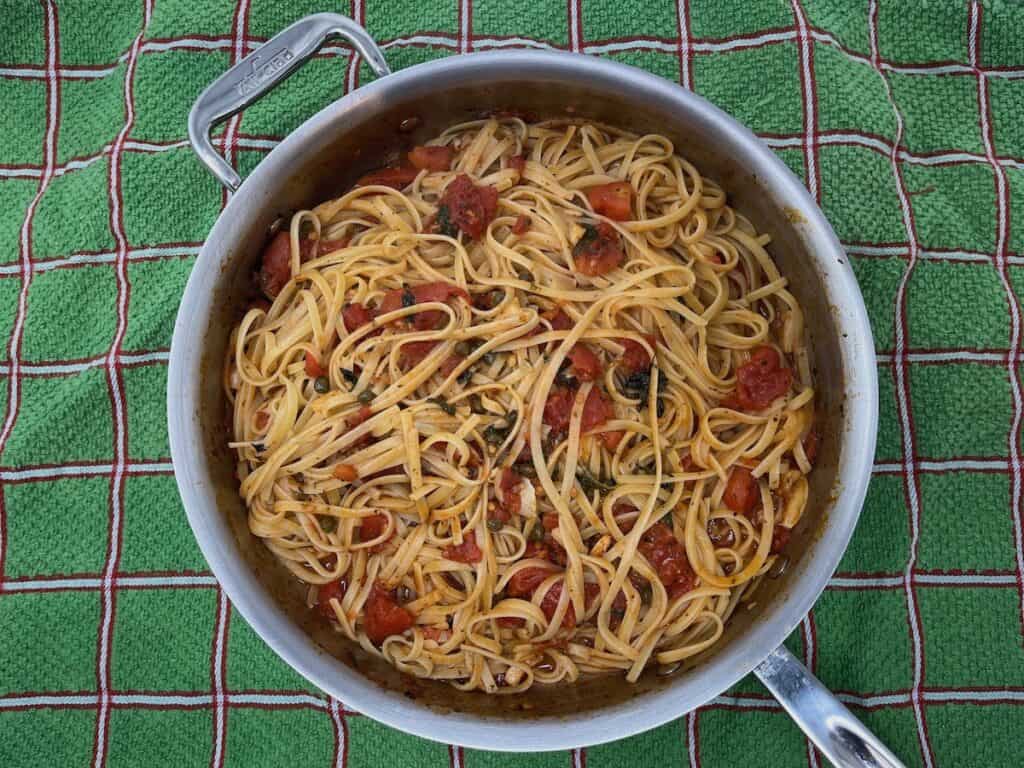
Ridged and tube-shaped pastas, such as rigatoni, work well with hearty sauces. The grooves and lines of the pasta, as well as the inside of the tubes, can hold the sauce well. This type of pasta pairs well with meat sauces.
Newest pasta variety
Pasta has been around for many millennia. So it’s not often that someone comes up with a new shape or kind of macaroni. But that’s exactly what happened in 2021.
The New York Times reported that Dan Pashman, host of The Sporkful podcast, created a new type of pasta called cascatelli. The name is a riff on the Italian word for waterfall, cascata.
Cascatelli is a hook-shaped noodle that looks like a curved water slide or a woman’s thick hoop earring. Supposedly, its curved shape and ridges along the edge do a better job of holding lighter sauces than other shorter-shaped pastas do. Also, it is easier to pick up with a fork than smooth, short pasta, such as elbow macaroni.
Final thoughts
Pasta and sauce is one of the easiest dishes you can make. Now that you’re familiar with different kinds of noodles and how they got their name, maybe you’ll try something new the next time you’re making Italian for dinner.
Leah Ingram and her husband Bill Behre recreate their grandparents’ Jewish and Italian recipes, respectively, along with new, favorite dishes from a variety of cuisines on their blog Bagels and Lasagna.